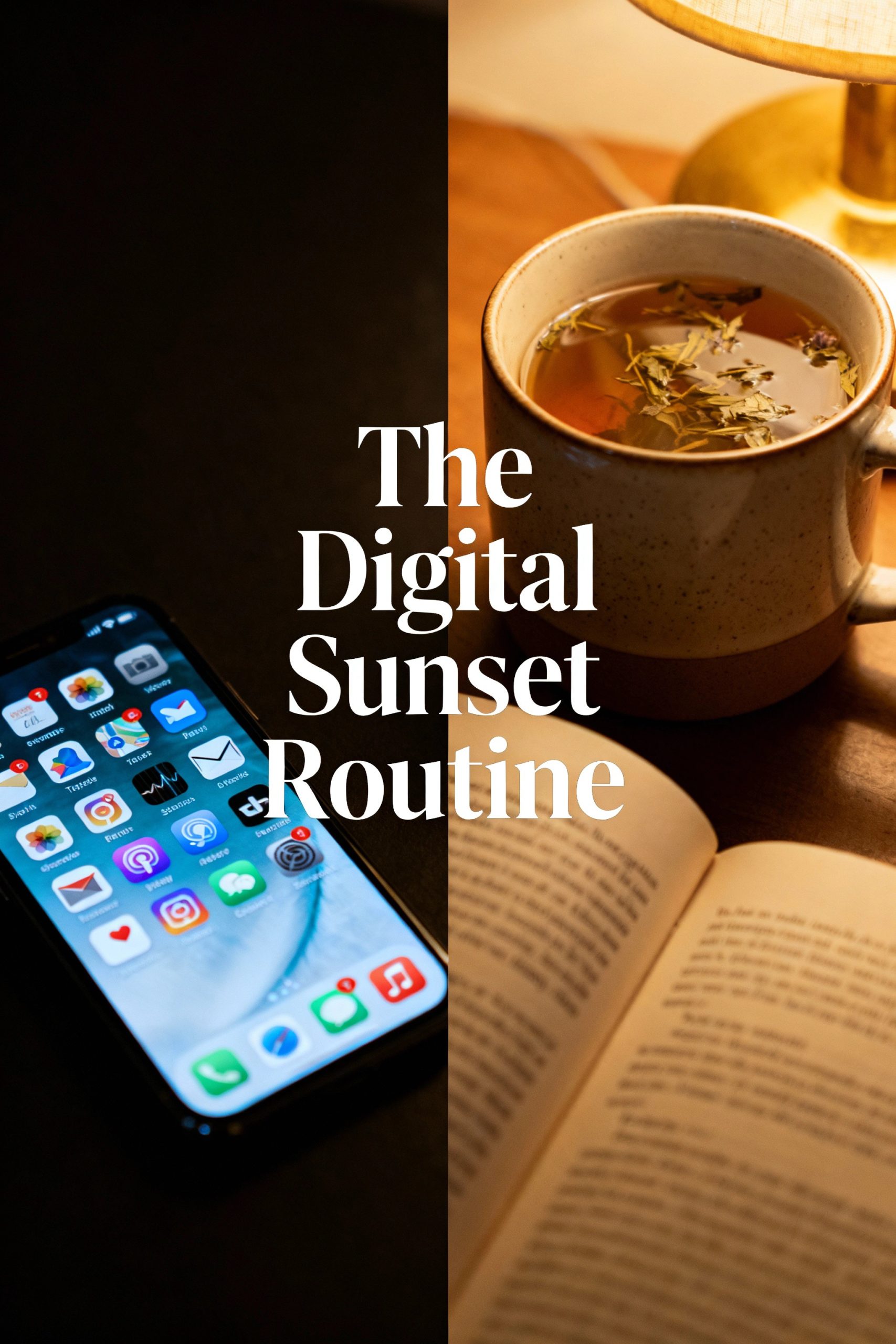In the quiet of the evening, the familiar blue glow of a screen often becomes our final companion. A promise to “just check one thing” quickly descends into a digital rabbit hole of endless scrolling, news alerts, and social feeds. Before we know it, an hour has passed. Our minds are buzzing, our eyes are strained, and the peaceful transition to sleep feels miles away. This cycle—a promise of connection that delivers a deficit of rest—is one many of us know too well.
If you’re ready to trade screen-induced anxiety for genuine tranquility and wake up feeling truly refreshed, it’s time to embrace the “Digital Sunset.” This is not a drastic digital detox, but a gentle, intentional practice of winding down from technology to allow your mind and body to prepare for restorative sleep. It’s a simple framework that can produce remarkable results in as little as three days.

Understanding the “Why”: The Science Behind a Screen-Free Evening
To fully appreciate the benefits of a Digital Sunset, it helps to understand what’s happening in our brains during those late-night scrolling sessions. Our constant connectivity comes at a physiological cost, primarily by disrupting two key systems.
1. The Disruption of Your Natural Sleep Cycle (Circadian Rhythm)
Our bodies are governed by an internal 24-hour clock known as the circadian rhythm. This rhythm tells us when to feel awake and when to feel sleepy. A key player in this process is melatonin, the hormone of darkness. As natural light fades in the evening, our brains produce more melatonin, signaling that it’s time to sleep.
However, the bright blue light emitted from our phones, tablets, and laptops mimics daylight. When you look at a screen at night, you’re essentially sending a signal to your brain that says, “It’s still daytime!” This suppresses melatonin production, delaying the onset of sleep and reducing its quality.
2. The Overstimulation of Your Mind
Your brain needs time to decompress and shift from an active, problem-solving state to a relaxed, restful one. Scrolling through content—even if it’s enjoyable—is an active process. Notifications, engaging videos, and thought-provoking articles keep your mind in a state of high alert. This can sustain levels of cortisol (the stress hormone) and adrenaline, making it difficult to switch off and relax into sleep.
Your 3-Day Plan to a Restful Evening
This structured plan is designed to be approachable and effective. The goal is not perfection, but consistent, small steps toward a healthier habit.
Day 1: Awareness and The First Step
The Goal: To establish a clear boundary between “daytime tech” and “evening rest.”
The Action Plan:
- Choose Your Sunset Time: Select a time at least 60-90 minutes before you intend to be asleep. If you go to bed at 11:00 PM, your Digital Sunset could be at 9:30 PM or 10:00 PM.
- Set a Reminder: Use an alarm or a calendar notification on your phone labeled “Digital Sunset.” When it goes off, it’s your cue to stop.
- The Single Action: For today, simply put your phone down. Place it on a charger, face down, and leave it there. You don’t have to move it out of the room yet. The first step is just honoring the boundary.
Why It Works: This initial action breaks the pattern of mindless scrolling. The alarm externalizes the decision, making it less of a battle of willpower.
Day 2: Replace and Reconnect
The Goal: To fill the newly freed-up space with a calming, screen-free activity.
The Action Plan:
- Follow Your Sunset Time: When your alarm goes off, put your phone away as you did on Day 1.
- Introduce a Replacement: Immediately engage in a pre-planned analog activity. Having something ready is key to avoiding the “what now?” feeling. Choose from ideas like:
- Calm & Quiet: Reading a physical book or magazine, listening to calm audio (on a non-phone device if possible), or simply sitting with a warm cup of herbal tea.
- Hands-On: Light tidying, sketching or doodling, writing in a journal, or working on a simple craft.
- Mindful: Gentle stretching, meditating for 5-10 minutes, or planning your to-do list for the next day on paper.
Why It Works: Your brain loves habits. By replacing the scrolling habit with a new, soothing one, you’re re-shaping your evening routine in a positive direction.
A Key Tip: The “Out of Sight” Principle
On Day 2 or 3, take the next step by moving your phone charger out of the bedroom entirely. Charging it in the kitchen or living room overnight establishes a physical separation that nearly eliminates the temptation for a late-night check, reinforcing your commitment to a restful space.
Day 3: Refine and Reinforce
The Goal: To solidify the new habit and link it to a positive morning.
The Action Plan:
- Execute the Routine: At your Digital Sunset time, put your phone in its designated charging spot (ideally outside the bedroom) and begin your chosen relaxing activity.
- Prepare for Tomorrow: As part of your new routine, take five minutes to do something that will make tomorrow morning easier. This could be laying out your clothes, packing your bag, or writing down your top 3 priorities for the next day.
- Notice the Difference: Pay attention to how you feel. Are you falling asleep faster? Do you feel calmer? Acknowledging the benefits is a powerful motivator.
Why It Works: Connecting your peaceful evening to a smoother morning establishes a powerful positive feedback loop. You’re not just ending the day well; you’re setting the foundation for a better day to come.
By the end of three days, you will have established the groundwork for a transformative habit. This isn’t about restriction; it’s about liberation. It’s about consciously choosing to give yourself the gift of a peaceful mind, a present evening, and the deep, restorative sleep your body needs.


